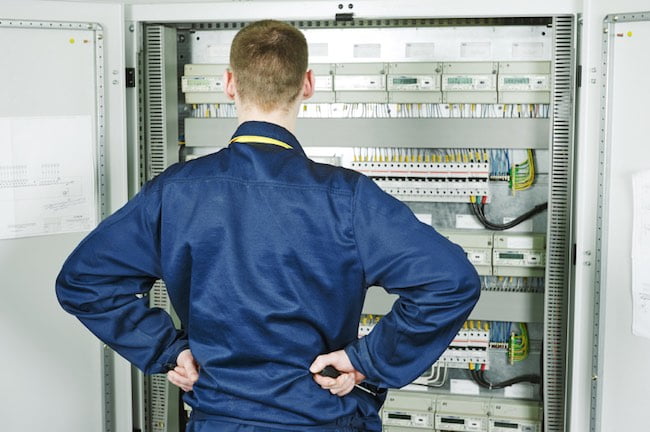7 Tips for Temperature Control of Electrical Enclosures

The temperature of equipment in electrical enclosures must be controlled to avoid the risk of equipment failure due to overheating. In most cases, some form of enclosure temperature control is needed.
These seven tips can help you assess your temperature control systems. Although enclosures dissipate heat, the total heat load in many instances exceeds the rate at which this heat can be dissipated, and the internal enclosure temperature may exceed the maximum temperature limits of the equipment.
1. Manage Heat Load
The temperature of an enclosure depends on the total heat load and the heat removal rate, so it’s necessary to establish the total heat load in the enclosure. As a first step, determine the total heat generated in watts by the equipment. Information is readily available from manufacturers, or it can be calculated based on power consumption and equipment efficiency.
2. Establish Maximum Allowable Enclosure Temperature
Review the maximum temperature limits of the equipment in the enclosure taking into account that some manufacturers derate their equipment above certain temperatures. Choose an enclosure temperature that allows the equipment to operate well within its specifications to avoid the risk of any individual item overheating. Bear in mind that there will be some temperature variation within the enclosure, especially around VFDs. It has been found that 95 °F is a good compromise between cooling cost and reliability.
3. Verify Ambient Temperature Range
Using climate data and other measurements, determine the maximum ambient temperature that is expected at the location of the electrical enclosure. Don’t neglect the heating effects of other equipment in the area. A correct assessment of the maximum ambient temperature is essential as any errors could lead to higher enclosure temperatures than anticipated and poor temperature control. Don’t forget to establish the lowest temperature. A low ambient temperature could cause internal condensation and may necessitate the installation of an enclosure heater to prevent the temperature falling too low.
4. Calculate Required Cooling Capacity
Using all the information gathered it’s possible to calculate the enclosure cooling requirements. This is best achieved using an online calculator as the manual calculations are quite complex and, unless you’re an expert, could have significant errors.
The calculation allows the user to specify the cooling method, and, unless the method of cooling has already been chosen, it’s worth using all three methods (air conditioners, air to air heat exchangers, and filter fans) to see what is practicable and most economic.
5. Verify Enclosure Type
The type of enclosure used will impact on the cooling solution. If the ambient temperature is higher than the enclosure temperature, there’s no point choosing a ventilated enclosure or an air to air heat exchanger because a closed loop air conditioner is required to lower the temperature below ambient. Also take into account the environment:
- Is it very dusty?
- Are there corrosive vapors present?
- Is the enclosure subject to wind and rain?
These considerations will help determine the correct NEMA rating of the enclosure and especially whether it should be sealed or can be ventilated.
6. Choose Cooling Method
At this point, it’s possible to choose the best cooling method for effective temperature control. The three choices are:
- Filtered fan: This will work with lower heat loads provided there’s no requirement for a sealed enclosure and the ambient temperature is several degrees lower than the desired enclosure temperature.
- Air to air heat exchanger: This is a very efficient closed loop solution that’s suitable for moderate heat loads. However, like filtered fans, the ambient temperature must be lower than the desired enclosure temperature.
- Air conditioner: The most robust and powerful closed loop solution that can handle the most difficult applications and provide the best temperature control.
7. Monitor the Enclosure
It’s always good practice to install some method of remote enclosure monitoring as most electrical enclosures are unattended. This will give early warning of any problems and prevent a possible power outage. It’s also wise to fit a door kill switch so that if the enclosure door is inadvertently left open, equipment such as air conditioners will not run continually.
Further Information
For additional information on how to manage your enclosure temperature, contact our Support Team who will gladly advise you on the best temperature control solution for your electrical enclosure.

